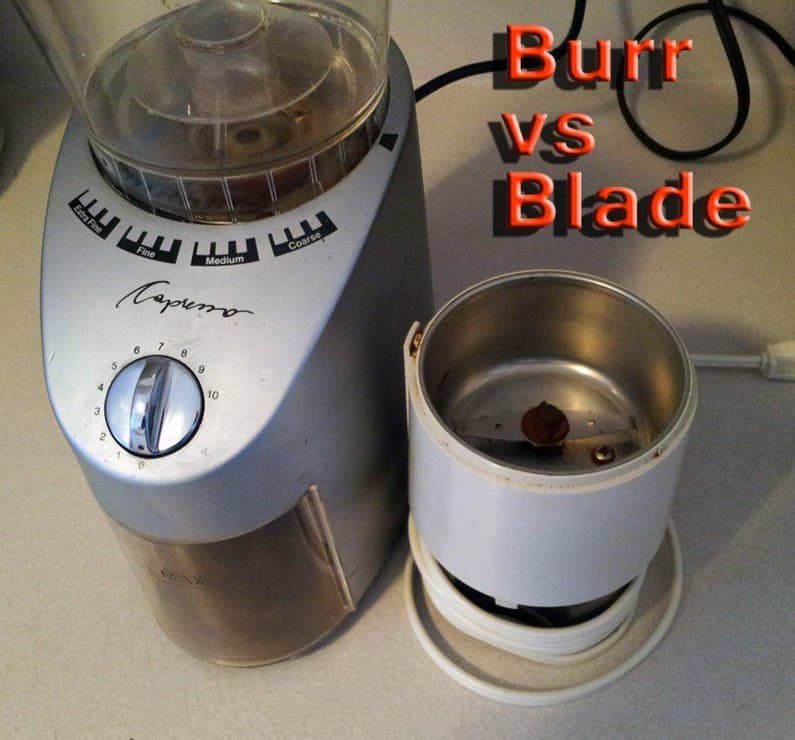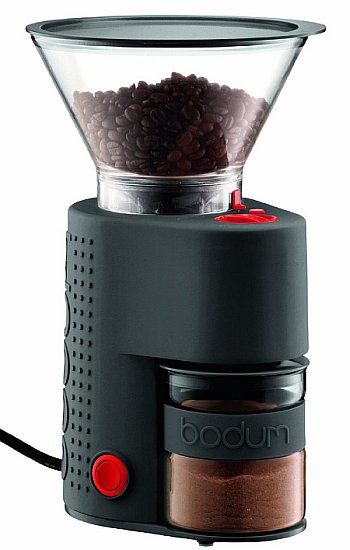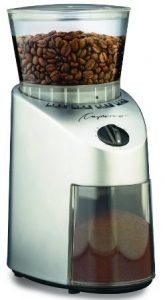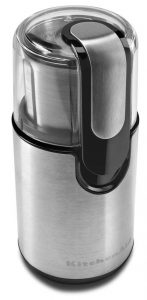When brewing a pot of stovetop espresso, you have two choices, buy pre-ground coffee, which is probably what most of us Moka pot lovers do, and have your own grinder and buy whole beans. While pre-ground is a decent solution, buying your own beans and grinding just seconds before brewing, take your espreso on a new level.
In this article, I will show you how to choose a grinder. I will also recommend you a few good coffee grinders, that you can pair with your Moka pot.
Without further ado, let’s jump in.
How to Choose A Grinder for StoveTop Espresso
As a seasoned barista, I got my fair share of failed espresso shots, and in many cases the grinder was at least partly responsible for the issue. So having a good grinder is important. If you don’t want to spend, just stick to pre ground and buy small quantities at once. Trust me, it’s better.
Spending over $200 on a high-quality grinder might seem excessive, especially when your Moka pot only costs about $40. But looking at it from a barista’s perspective, this investment is more about quality than price.
A good grinder ensures a consistent grind size, which is key for getting the best flavor from your coffee beans, especially with a Moka pot. Grind consistency is essential for brewing a great cup. It turns your daily coffee brewing into something special, full of rich flavors, making the higher price a smart choice for great coffee every time. Espresso extraction has its own troubleshooting chapter on grind size and grind size consistency, if you want to learn more about it.
At the end of the day, a decent grinder should be okay, but extracting the flavors in a uniform and consistent way, requires a consistent grind size.
Coffee grinders start at around $20 and you can pay hundreds or even thousands for a serious grinder. If you haven’t outlaid thousands for a commercial machine or buried money into a barista course but you do have surplus cash to invest in this daily ritual, your next worthwhile investment should be a worthy coffee grinder.
At entry level, coffee grinders will either be the manual or electric burr grinder or the electric blade grinder. But let’s see what are the criteria for selection, so that you can make an informed decision.
Build Quality
A grinder’s build quality is not just about durability; it’s a testament to its ability to perform consistently. For Moka pot brewing, the grinder must withstand frequent use while maintaining precision. High-quality materials, such as stainless steel burrs and solid construction, not only promise longevity but also ensure a consistent grind every time – a non-negotiable for the Moka pot method.
Grind Settings and Adjustments
Precision is key in achieving the ideal grind size for Moka pots. A superior grinder offers a range of settings, allowing you to fine-tune the grind to your exact preference. This flexibility is crucial as even the slightest variation in grind size can drastically alter the taste and quality of your brew.
Repairs and Maintenance
Any barista worth their salt will tell you that a good grinder isn’t just about the initial performance – it’s also about how well it can be maintained. Grinders designed with easily replaceable parts and straightforward cleaning processes stand the test of time. Look for grinders that offer accessible customer service and repair options. This foresight ensures that your grinder, much like your love for coffee, endures.
The Price of Perfection
Yes, a top-tier coffee grinder is an investment. But consider the cost per use, coupled with the unparalleled taste of a perfectly brewed Moka pot coffee, and it becomes a worthy expenditure. We’re not just buying a grinder; we’re investing in countless mornings of joy, a ritual that starts with the simple act of grinding beans.
In conclusion, for the Moka pot enthusiast, the choice of grinder is pivotal. A high-quality grinder ensures a consistent and precise grind, a cornerstone in the alchemy of coffee brewing. Remember, the right grinder is not an expense; it’s an investment in your daily ritual of crafting the perfect cup.
Burr Grinder vs Blade Grinder
I know you will be tempted to buy a blade grinder, because they are not as expensive. Please don’t. They produce a grind size that is all over the place. I recommend you buy pre-ground, rather than owning a blade grinder. Nut here is a comparison between the two.
Bur Grinder
A burr grinder, grinds the coffee beans between two revolving abrasive surfaces. The distance between the two abrasive surfaces is set by the user and determines the size of the grind. When the distance is larger, the grind will be coarser (larger granules) and when the two abrasive surfaces are set close together, the grind will be fine (smaller granules).
Blade Grinder
The electric blade grinder, uses high speed spinning blades to slice through the coffee. You may well have an example in your pantry already. If you own a bar mixer, stick blender or spice grinder there’s a good chance it’s an electric blade grinder. These are all using the same principals as a branded bean grinder would.
Burr Grinder Vs Blade Grinder
The burr grinder controls the grind size by setting the distance between the burrs (abrasive surfaces). This method gives the user more control and is more capable of producing a consistent grind than the choppiness of the propeller blades in a blade grinder.

Burr grinders improve coffee extraction by ensuring all the coffee particles are extracted uniformly.
The manual burr grinders are a great camping/travel companion and will give your arms a good workout if nothing else. It’s also a back-up for when you have a caffeine urge in a power outage.
A purist might say ‘a Ninja with a Samurai sword would do a better job on your beans than a blade grinder’. That said, I have made my share of stovetops using this method and have lived happily through the occasion.
The blade grinder tends to hack at your beans as the blades rotate at high speed. The user controls the grind size by the amount of time the blade chops away at the beans. These types of grinders are not very consistent in grinding a uniform profile and some will not give you the range of grind profiles required for different styles of extraction.




You must be logged in to post a comment.